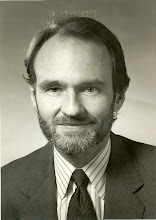Coming into Q2 we attributed more horsepower to the US jobs machine than she could muster. We want to understand why; thus equipped, we will have an accurate view of reality ahead for this sector, of those factors needed for a burst in this activity.
In earlier posts we highlighted employers’ lack of enthusiasm for the current administration’s interventionist policies, Obamacare chief among these. Our problem at making strategy for the jobs sector, Q2, is that we underestimated this concern.
From reported interviews and those of our own we know the dynamic remains firmly in place – businesses which have an increase in demand are meeting that demand by working existing employees longer hours, only adding to staff when the shortage is extreme. Or of course they hire temps who are not freighted with benefits (nor much salary either). This should be news to no one.
Employers do not have any idea yet how much Obamacare will add to the cost of new employees. They won’t have an idea of tax rates or health care costs until after the Nov election. The threat of an expanded regulatory burden coupled with the mess in the E-Z simply keeps them on hold, swimming in cash.
CEO’s are paid to take risks but not in a game where the playing field is uneven and rules change every Qt.
Next, there is little the Fed can do and most policy makers know it.
We praised Bernanke for the impulse towards openness but warned him last year it could well get him in trouble if taken too far. That has been the result – there is no longer the power of impact, of announcement, the wallop so needed is gone. There is only crazy making.
The Fed’s “dual mandate” (a huge mistake) gives everyone, policy maker and politician alike a license to meddle. The Fed regularly refers to its dual mandate in justifying its unusual and mostly harmful interventions. We are not referring to 2009. Something bold was needed, but now, Bernanke’s tinkering, his non-rule based activity is nearly as corrosive to business and investor confidence as Obama’s.
Potential employers hope that given a Republican victory in November, Washington’s interventionist policy will be jettisoned. The hope is that microeconomic planning, the hallmark of a statist president gives way to a coherent, long-term fiscal policy instead. We can also hope for a return to sound and sane rule-based policy making at the Fed; if we are lucky, a return to a single mandate of price stability. These two measures will lend considerable confidence to business planners, and away we will go.
In the meantime, the best thing Obama and Bernanke can do for America and the rest of the free world is to sit on their hands.
Robert Craven
In earlier posts we highlighted employers’ lack of enthusiasm for the current administration’s interventionist policies, Obamacare chief among these. Our problem at making strategy for the jobs sector, Q2, is that we underestimated this concern.
From reported interviews and those of our own we know the dynamic remains firmly in place – businesses which have an increase in demand are meeting that demand by working existing employees longer hours, only adding to staff when the shortage is extreme. Or of course they hire temps who are not freighted with benefits (nor much salary either). This should be news to no one.
Employers do not have any idea yet how much Obamacare will add to the cost of new employees. They won’t have an idea of tax rates or health care costs until after the Nov election. The threat of an expanded regulatory burden coupled with the mess in the E-Z simply keeps them on hold, swimming in cash.
CEO’s are paid to take risks but not in a game where the playing field is uneven and rules change every Qt.
Next, there is little the Fed can do and most policy makers know it.
We praised Bernanke for the impulse towards openness but warned him last year it could well get him in trouble if taken too far. That has been the result – there is no longer the power of impact, of announcement, the wallop so needed is gone. There is only crazy making.
The Fed’s “dual mandate” (a huge mistake) gives everyone, policy maker and politician alike a license to meddle. The Fed regularly refers to its dual mandate in justifying its unusual and mostly harmful interventions. We are not referring to 2009. Something bold was needed, but now, Bernanke’s tinkering, his non-rule based activity is nearly as corrosive to business and investor confidence as Obama’s.
Potential employers hope that given a Republican victory in November, Washington’s interventionist policy will be jettisoned. The hope is that microeconomic planning, the hallmark of a statist president gives way to a coherent, long-term fiscal policy instead. We can also hope for a return to sound and sane rule-based policy making at the Fed; if we are lucky, a return to a single mandate of price stability. These two measures will lend considerable confidence to business planners, and away we will go.
In the meantime, the best thing Obama and Bernanke can do for America and the rest of the free world is to sit on their hands.
Robert Craven

No comments:
Post a Comment